Top 6 Ways to Stay OUT of the Ditch This Winter
Slow Down.
Now this might seem a little bit obvious but it’s the #1 thing you can do to safely navigate snow and ice. Slow and measured actions are safe and prudent. A few years ago I was driving about 25 mph on an Oregon mountain pass as the snow fell. I was passed several times by large 4-wheel drive vehicles. One of the very same SUVs that passed me going around 50 MPH had slid off the road about 5 miles later. In fact I counted six different 4WD vehicles (in the ditch) that particular trip. It is better to drive a little slower and get home safe than overestimate your driving and/or vehicle’s capability and end up off the road.
2. Accelerate and Brake slowly and smoothly. Beneath the surface of a light snow pack is often ice. If a car has some momentum you can usually go straight without too many problems, however as soon as you turn too quickly or brake too hard that grip is easily lost. That’s why you see many cars off the side of the road where there are big turns (on-ramps), or near hills. When the roads look clear but temperatures are freezing, it’s crucial to slow down, because you can’t always see ice on the road. Black ice is invisible to drivers and will sneak up on you, especially on bridges. Since cold air flows underneath them, you can assume the bridge coming up is frozen and slippery. Proceed with caution and cover your brake.
3. Winterise your vehicle. Replacing the water in your radiator with antifreeze will protect your engine. Keeping your gas tank at least half-full will keep your car running if you get stuck. A good friend was stuck in I-405 traffic for 5 hours during that major Seattle snowstorm in ’08. Luckily, he had enough gas. However, many people ditched their cars on the side of the freeway and had to hike to the next exit to get gas. Also, I don’t think I’ve ever valued wiper fluid as much as I do when I’ve been showered with dirty winter snow from the big trucks in front of me.
4. The Separation is in the Preparation. When Russell Wilson said this he was referring to football; however, we’re going to apply it to winter driving. Every car should be equipped with an emergency kit complete with first aid, triangles or flares, jumper cables, and flashlight/batteries, etc. Also a charged cell phone, a blanket, granola bar, and water will come in handy while you wait for help to come. If you go out in the snow, it’s a good idea to throw a small shovel and a sand/cat litter bag in the trunk in case you get stuck and need to dig yourself out.
5. Skidding out of control? Steer in the direction you want to go. Many people that have not experienced a skid get this one confused. Should you turn into the skid or away? And what does that mean anyway? Here’s an example: if your back end is sliding to your right, you need to steer to the right as well. If you steered to the left in this situation you would end up spinning around.
I was driving in upstate New York one winter when a snowstorm hit. I was doing about 50 MPH and didn’t realise how slick the freeway was and I started to slide. I steered in the direction of the skid, but the tail of my car whipped back the other way as soon as I got control. This went on back and forth five or six times until I was finally able to stop less than a foot from a cement barrier. I’ll admit, I had to take a break for a minute to catch my breath from all the adrenaline. The car behind me, who witnessed the entire ordeal, was clapping as he drove by. I wasn’t trying to look like a stunt driver, but did slow down considerably for the rest of the trip. I just count my lucky stars it was a wide freeway and my car didn’t hit anything. Bottom line: look where you want to go and do whatever it takes to steer yourself there. The wheel will jerk but you need to hold it steady. If you look off the road, that’s where you’ll go. Keep focused on your empty lane ahead and that’s where you’ll go. This guy gets it . . .
6. Stay home. What? Did I really just say that? I’m sure you’re yelling at your screen, “How dare you infringe on my driving rights”! True, you can try to brave the weather, however we need to gauge our risk tolerance with our pocket book. The average cost for a crash with vehicle property damage is around 7,500. Your insurance will pay for most of that, but they are in business for a reason, and you’ll eventually pay them back through higher premiums. So if you just want to go out in a snowstorm for a donuts run, you might want to err on the side of caution.
THURSDAY, OCTOBER 6, 2016
Top 5 most dangerous aspects of fall driving
Fall is a beautiful season with colourful leaves falling from trees and the noticeable change in the air. For me it’s the smell of hot apple cider and the distant sound of Friday night football games that bring back so many memories. To keep everyone safe out there, here are some helpful tips on how to navigate the changing weather and to be safe on the road.
#1 School –
As kids go back to school, there is more traffic on the roads early in the morning and mid-afternoon. Many kids wait for the bus in the dark, so be sure to slow down in residential neighbourhoods. Here are the rules for school buses flashing their red lights (from the WA State driver’s guide page 3-23):
“You must stop for a school bus that is stopped with its red lights flashing whether it is on your side of the road, the opposite side of the road or at an intersection you are approaching. You are not required to stop for a school bus with red lights flashing when the stopped school bus is travelling in the opposite direction and the roadway: – has three or more marked traffic lanes, – is separated by a median, or – is separated by a physical barrier.”
#2 Tire Pressure –
When temperatures drop so does your tire pressure. An under-inflated tire can be dangerous because more of your tread is touching the ground and that causes more friction. This will wear out your tires faster and can cause the tread to separate and increases the chance of a blowout. Be sure to keep your tires filled to the manufacturer’s recommendation, and if you’re unsure most tire shops will check and fill them for free. (Just don’t drink their coffee and eat all their popcorn, too, you cheapskate!)
# 3 Fog –
It’s surprising how you’ll be enjoying a pleasant sunny September one day and then the fog will be there the next morning, seemingly out of nowhere. When navigating the fog, slow down. Studies have shown the human brain overcompensates for the lack of visibility and drivers actually drive faster in the fog, weird I know. For headlights, use low beams and/or fog lights. High beams reflect back and actually decrease your visibility in most cases. If you need to use a guide, follow the white lines on the right side on the road. Using the centre line as your guide will cause you to move closer to the middle and oncoming vehicles. And finally, maintain plenty of following distant. You don’t ever want to be involved in the middle of multi-car pileup (caused by fog and stupid drivers).
# 4 Rain –
Yes, Washington drivers know this one all too well. That first big rain of the year can be almost as dangerous as ice. The oils that have been burnt onto the road during the summer heat, are now bubbling up and causing slippery havoc. After that first big rain, a lot of it washes away. However, slow down around those corners, which is precisely where many new drivers get into their first crash.
#5 Frost –
As we approach the winter, there will be mornings when temperatures drop to freezing levels and create dangerous conditions. Again, careful on the corners, as this is where many people lose traction. There was a time during college when I was driving on I-5 and I started to fish-tail. Luckily, it was a straight stretch of road and by letting off the gas, and steering in the direction I wanted to go, I was able to regain control. It seemingly came out of nowhere, however it was over a bridge so I shouldn’t have been surprised. Unlike regular roads, bridges have cold air flowing underneath increasing the likelihood of freezing.
If you haven’t ever experienced a skid and don’t know how to control one, skid training is a great tool. Otherwise go to a big empty frozen parking lot and experience it first-hand (just don’t let your school principal or church pastor catch you, they might make you power wash off the skid marks).
6. Stay home.
What? Did I really just say that? I’m sure you’re yelling at your screen, “How dare you infringe on my driving rights”! True, you can try to brave the weather, however we need to gauge our risk tolerance with our pocket book. The average cost for a crash with vehicle property damage is around $7,500. Your insurance will pay for most of that, but they are in business for a reason, and you’ll eventually pay them back through higher premiums. So if you just want to go out in a snowstorm for a donuts run, you might want to err on the side of caution


